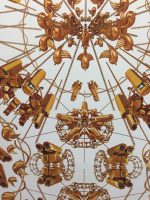
“If you love your country, you become a criminal,” celebrated and controversial Chinese artist Ai Wei Wei said during an artist talk when his exhibit, “On Porcelain,” opened at Sakıp Sabancı Museum (SSM). “If you want to understand your nation, you are already on your way to prison.”
At its announcement, many newspapers were quick to note the fitting nature of a ceramics exhibition making its way to Turkey, a country with its own rich history in the medium. But anyone familiar with Ai’s work — or who at least read his quote above — will know this exhibition is more than pretty Chinese pottery, and that it parallels much more than a Turkish connection to porcelain.
“On Porcelain” has been on display at SSM since Sept. 12, 2017; set to end Jan. 28, the museum has extended the comprehensive showcase until April 16. I recommend you catch it before it’s gone, because even an art simpleton like myself was moved by the sheer simplistic depth to this collection.
Admittedly, simplistic depth might be a confusing way to describe anything, much less an exhibition as grandiose and detailed as this one; it features over 100 works, some as old as 40 years, others taking up entire rooms. But somehow Ai manages to convey complex, politically fraught concepts in an accessible way, allowing the viewer to leave feeling both educated and empowered.
In the unquestionable highlight of his oeuvre, “Odyssey,” we approach a series of blue-and-white plates next to a vast, wallpapered room. The plates look to be the definition of ornamental “china,” but as we draw closer, familiar images stare back at us from their decorative centers. There is a young woman cradling the body of a fallen relative; there, a line of tanks raining fire on civilians; and there, the body of six-year-old Aylan Kurdi, washed upon the shore.

Entering the room, we see the walls are covered in friezes, but again, as we draw near we can see these are not quite the ancient murals of old — though they tell the same stories. Ai “adapts the logic of the Chinese and Greek pottery decoration and Egyptian wall painting to reflect on history and provide us with a comprehensive view of the contemporary world,” says SSM. And the message that history repeats itself is undeniable.
“We cannot simply separate human tragedy from beauty. … People find it alarming to see these together,” Ai said the night after his exhibition opened. And it is with disquiet that everyone walks along the edges of the room, wondering if today’s Odysseus will see his own epic poem.
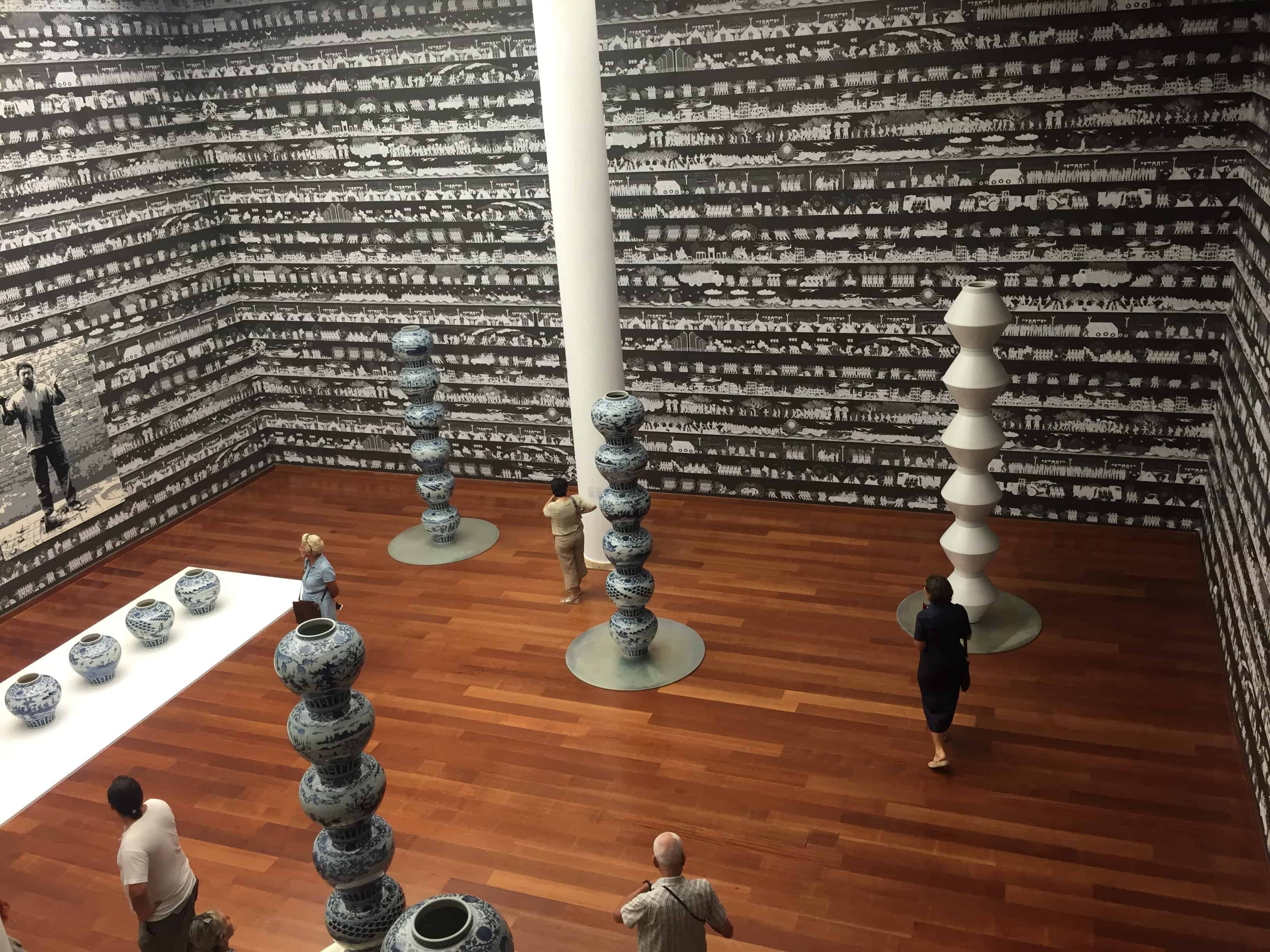
“On Porcelain” as a whole is arranged according to three concepts, “appropriation,” “reproduction” and “iconoclasm,” and these motifs come alive in, let’s be honest, what I would have thought was a pretty boring medium.

To my fellow art novices, “Taxi Window Crank” looks like it falls perfectly into the category of modern art with how random it is. But upon reading the corresponding plaque, we discover it’s an homage to the window cranks removed from Beijing taxis in 2012 to prevent people from throwing political messages onto the streets. Much of Ai’s work pointedly discusses censorship, and the form it takes transcends Chinese politics.
Ai questions value systems in his most notorious work, “Dropping a Han Dynasty Urn,” which is on display front-and-center in the wallpapered “Odyssey” room. The work has made quite the impact (pun intended), with countless iterations across the world, including one in Miami involving the smashing of a vase crafted by Ai himself, and another here in Istanbul at the Anna Laudel Contemporary.
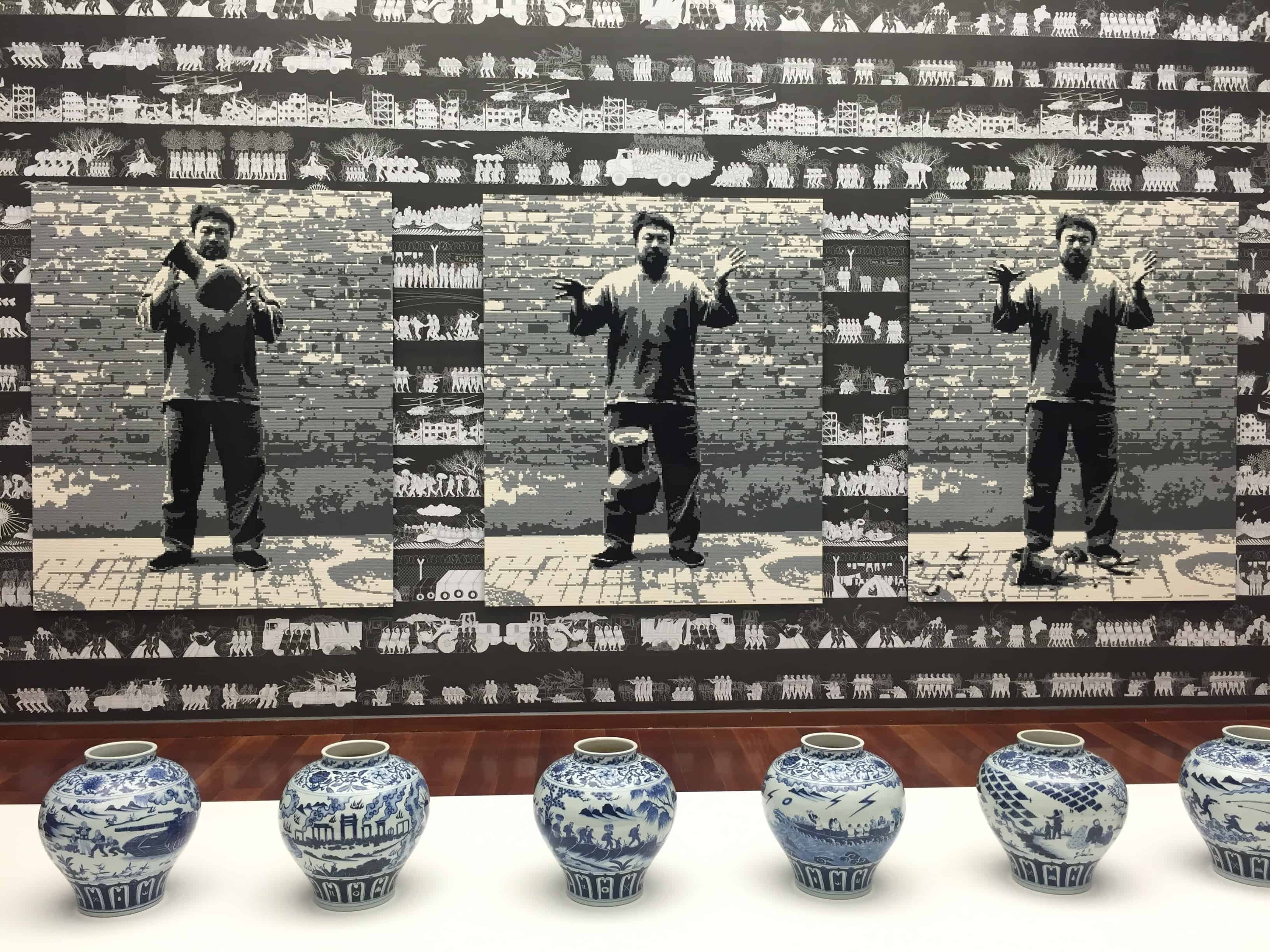
In “Colored Vases,” Ai further explores the idea of value and authenticity, dipping Neolithic and Han Dynasty urns (that’s 206 BCE – 220 CE y’all!) into industrial paint. Upon further reading, we can connect this action to the Chinese Cultural Revolution’s rejection of the past and the subsequent standardization that followed. Can you tell I seriously recommend reading all the signs at this exhibition?
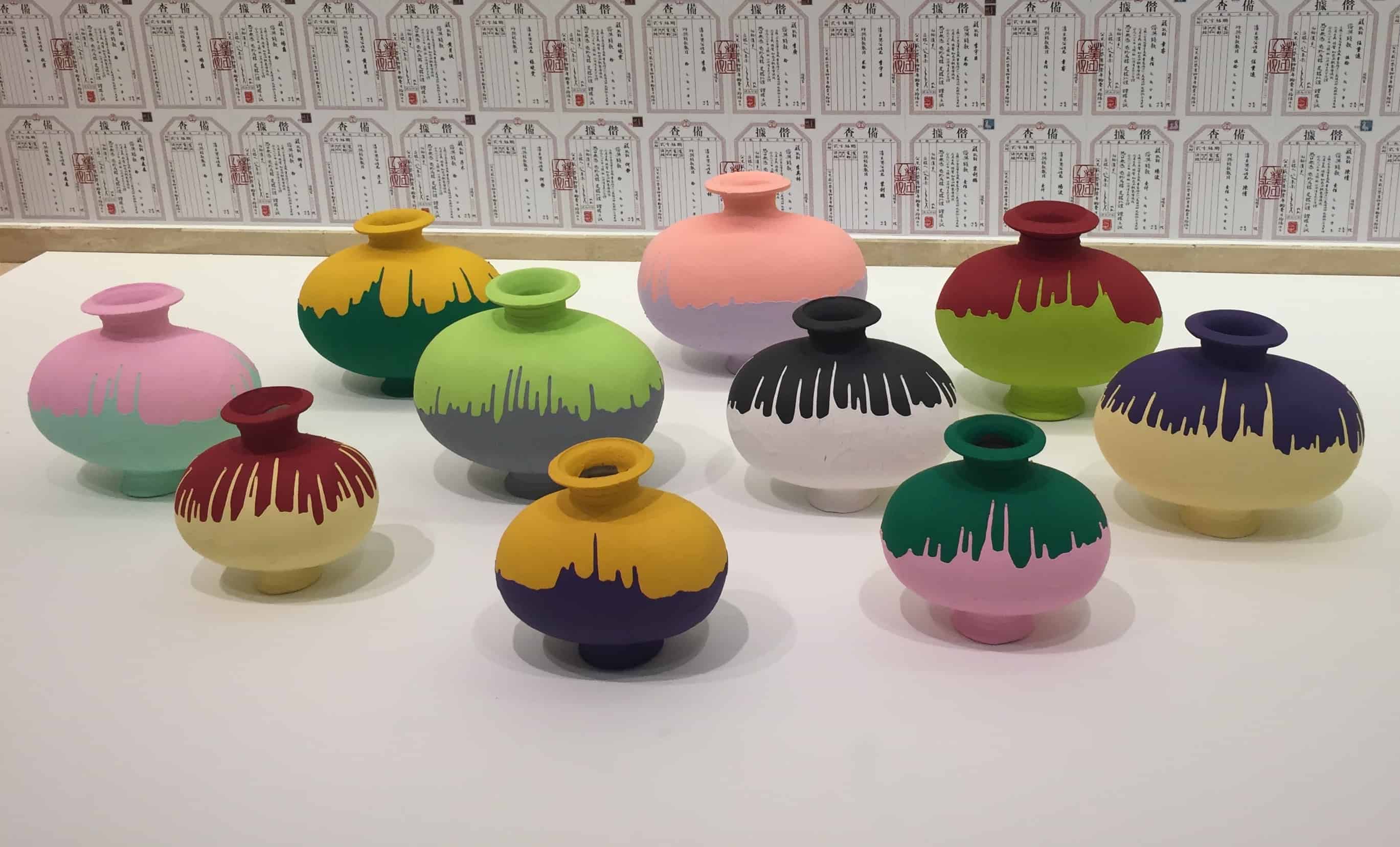
Bringing things full circle, Ai continues to play with the question of authenticity by creating two fake Qing-era vases and placing them next to an original, which is on-loan from Topkapı Palace. It’s place in the Topkapı collection speaks of the Ottoman connection to Chinese porcelain, and according to SSM Director Nazan Ölçer, Ai’s visit to the Museum of Turkish and Islamic Art is what inspired the idea for the SSM exhibition. “Everything became clear: porcelain was the answer,” she told the press.
But perhaps even more evocative of the Chinese-Turkish connection is a massive work Ai was lauded for years ago, “Sunflower Seeds.”
Each seed from the 5-tonne pile was sculpted from porcelain and painted by the hands of a Jingdezhen craftsman. Ai speaks of his piece as “the accumulation of individuals’ repeated, small efforts to become a massive, useless piece of work.”
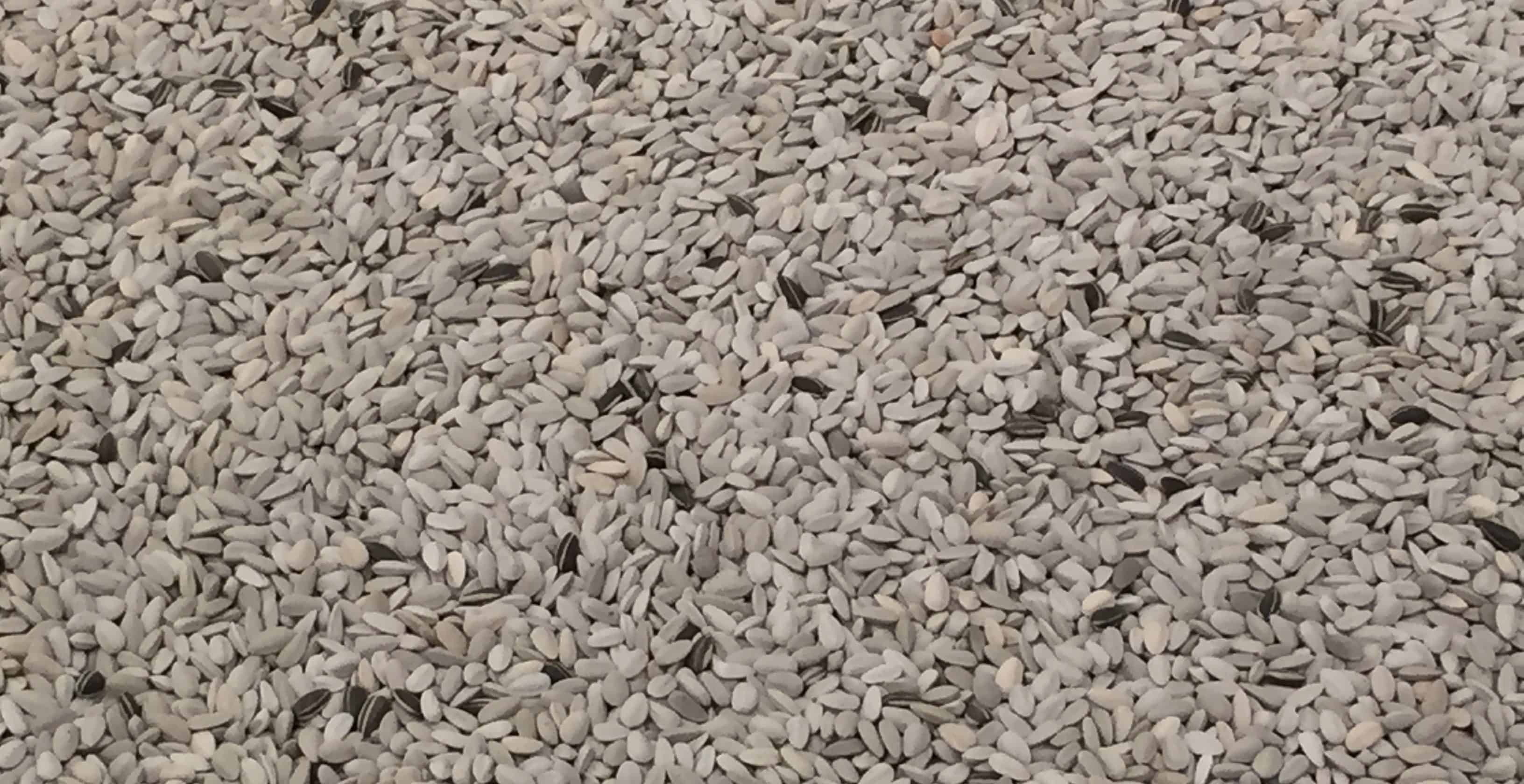
The juxtapositions that frequently pop up in Ai’s work — ancient and modern, original and fake — was also present in his dialogue with famous London curator Sir Norman Rosenthal, who hosted the discussion with Ai at SSM back in September.
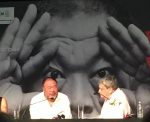
When an audience member asked (predictably) how one can bring “art to the masses,” Rosenthal immediately and succinctly responded with one word: education.
But Ai took a different approach, shirking the need for education if it wasn’t fruitful: “I believe I am part of the masses,” he said. “If I can hold on to that belief…” well, the rest follows.
The 2008 Sichuan earthquake, living in a surveillance state, his own house arrest in Beijing and the demolition of his Shanghai studio — these are all subjects Ai addresses in his art on display at SMM. In focusing on these topics he is questioning governments and he is questioning institutions, pushing against becoming apart of them.
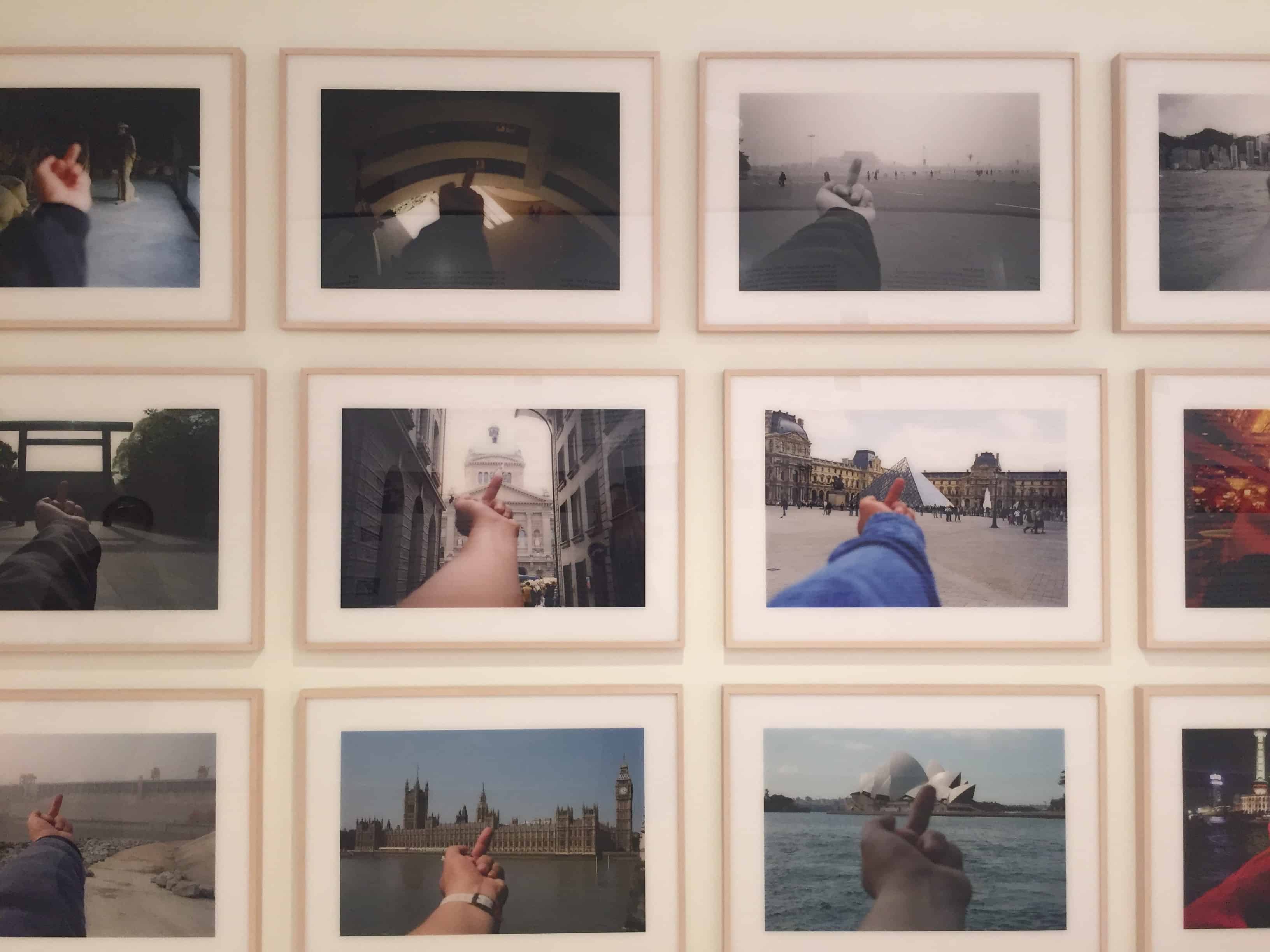
“As long as there is effort, there is progress,” he says.
After your visit to SSM, be sure to check out Ai and Rosenthal’s fascinating, and at-times uncomfortable artist talk here.
“On Porcelain” is running until Sunday, March 11, 2018 at Sakıp Sabancı Museum, which is open Tuesday-Sunday (10:00-18:00, 30TL). The museum is open late on Wednesdays (10:00-20:00), and admission is free that day. Check the SSM website for more details.









